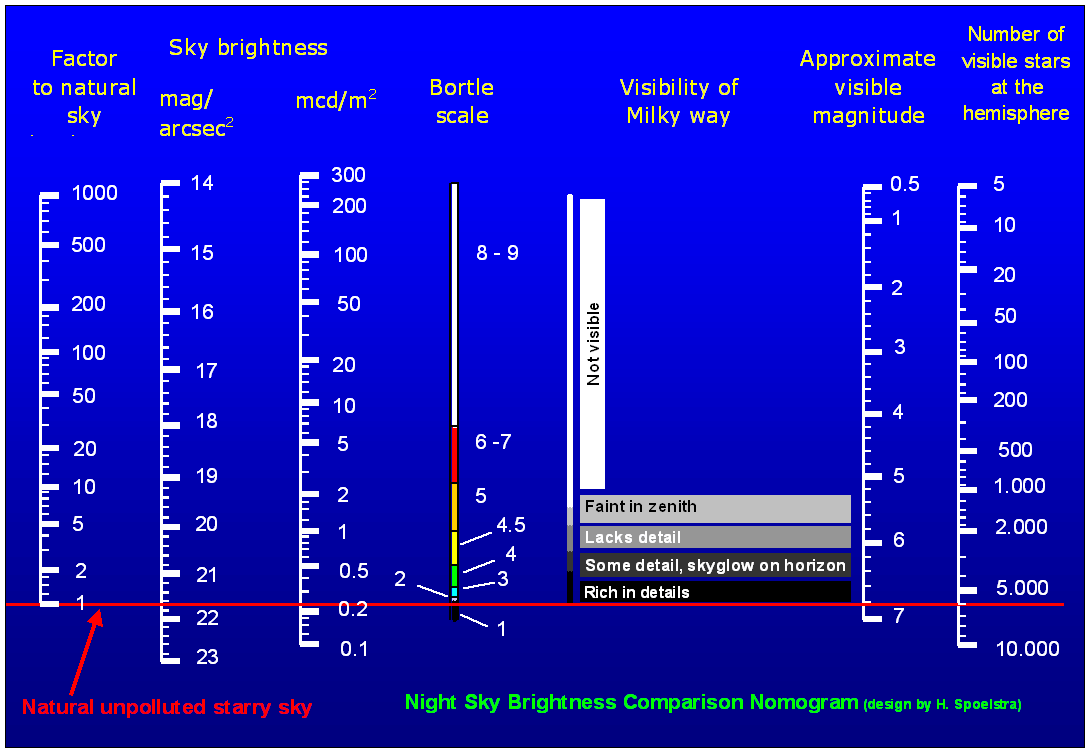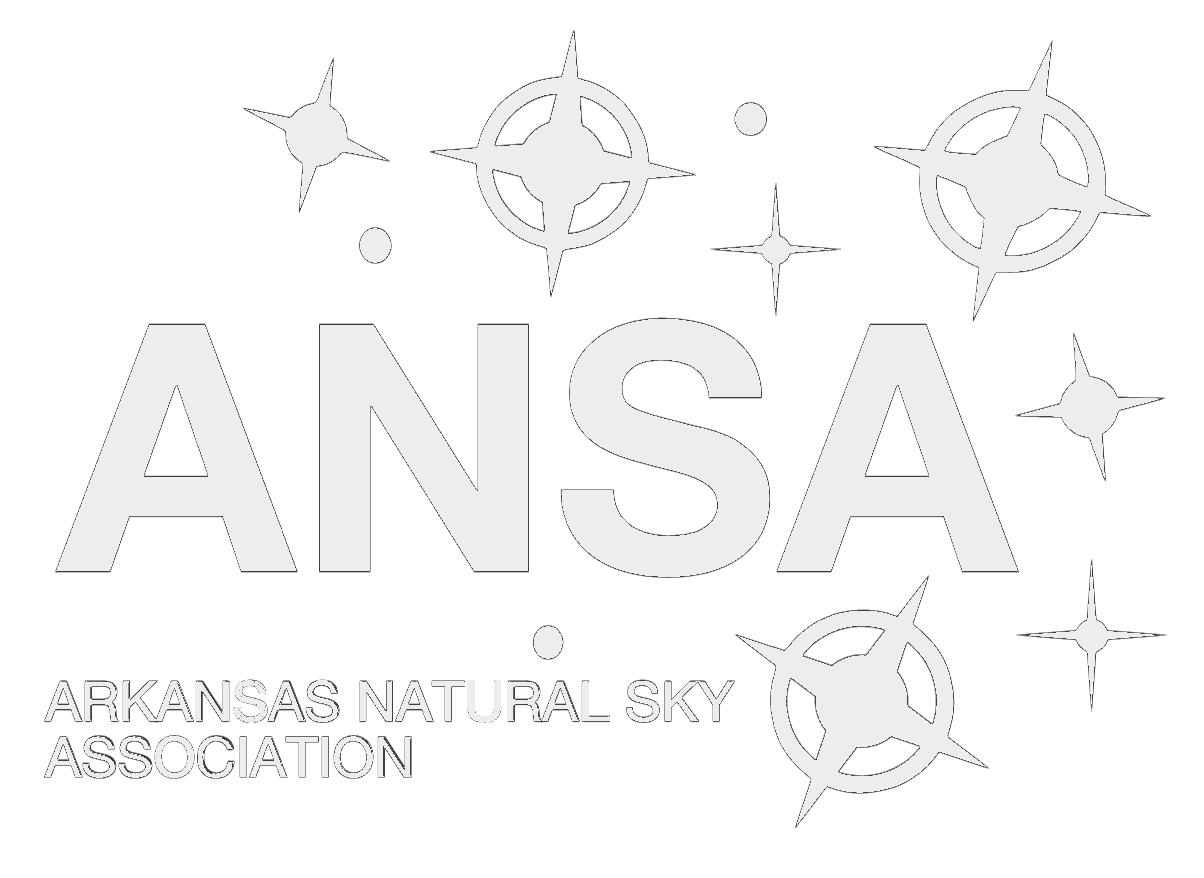Sky Glow Lingo Tutorial
How bright stars appear in the sky (apparent magnitude) is described by a magnitude system that, like so much dealing with stars, is rooted in history. Hipparchus created the first substantial catalog of stars in about 129 BC. He classified the brightest stars as first magnitude, another dimmer group, judged to be half as bright, second magnitude, and so forth down to sixth magnitude, the limit of most people’s vision under a naturally dark sky. It turns out, due to a characteristic of the human eye, each magnitude is actually brighter than the one below it by 2.512 time such that a sixth magnitude star is 100 times dimmer than a first magnitude star, while a seventh magnitude would be 251 times dimmer and an eighth would be 631 times, etc.
So how dark is my sky?
The dimmer the star the easier it is to hide it with ambient light in the sky. So a “sixth magnitude sky” is a sky in which stars of a sixth magnitude can be seen near the zenith with the naked eye on a clear moonless night. In a fifth magnitude sky, stars dimmer than fifth magnitude are washed out, etc. This is often referred to as the Naked Eye Limit Magnitude or NELM, and it is how skyglow is measured in the Globe-at-night program where you will learn how to document your community's level of light pollution as a citizen scientist helping validate the global light pollution map. (While you are at it you will learn the constellations and optionally the Greek and Roma mythology tied to them.)
One can also measure skyglow using a Sky Quality Meter (SQM). In such cases, the sky’s brightness is usually expressed either in terms of candelas (a standard measure of luminance) per square meter of the sky, or more commonly, in terms of what magnitude star it would take to equal the measured brightness if each arcsecond of the sky had one star of the stated magnitude.
Another popular way of describing a sky’s brightness, as opposed to measuring it, is the so-called Bortle scale, which ranks a sky in one of nine categories based upon an overall all visual assessment of its characteristics, such as what structures and general features can be observed.

